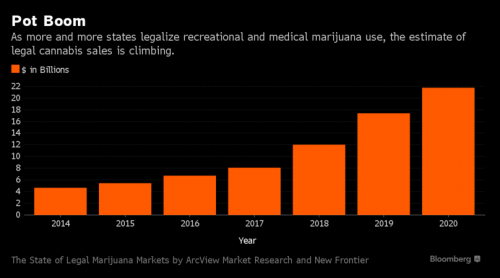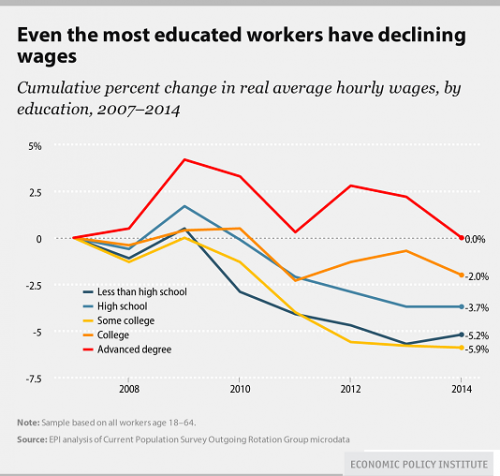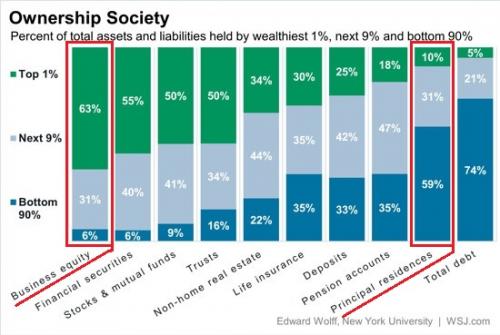News Dump Thursday: Hedge Fund Fail Edition
Submitted by gjohnsit on Thu, 03/24/2016 - 11:36am

It's amazing it took investors this long to figure it out, that paying big fees to under-perform the market isn't a good strategy.
Investors allocated a net $4.4 billion to hedge funds in February, 80 percent less than the average pledged during the month since 2010, according to data from eVestment. February typically sees increased inflows as investors rebalance their portfolios and the drop reflects investor dissatisfaction with returns last year, eVestment said. In the six years to 2015, investors added an average $22.6 billion in net new capital to hedge funds every February.
And when the money doesn't in, this happens.
Hedge-fund shutdowns outnumbered startups last year for the first time since 2009, according to data firm Hedge Fund Research, as the global industry contracted amid market volatility.
In the last quarter, 305 funds closed compared with 257 a year earlier, taking the total for the year to 979. Startups totaled 968, the Chicago-based company said in a report on Thursday.
Spills out into mutual funds
Hdge fund performance problem
Hedge funds have had a tough go of it lately. The HFRI Fund Weighted Composite Index – an equal-weighted index of hedge funds – was down 1.1 percent in 2015, and is down another 2.3 percent through February of this year.
For many hedge funds, recent declines are the worst since the financial crisis in 2008 (that event served as a useful scapegoat for hedgies' near-universal slump that year). But this time there isn’t a common culprit for managers to point to; hedge funds’ misfortunes have been blamed on various and sundry factors from central bank surprises to unlucky individual stock picks (see Valeant) to bungled market timing.
...
But the HFRI Index’s enviable long term performance masks an unflattering trend: The rolling ten-year returns have been in a very significant decline since the launch of the HFRI Index. The HFRI Index returned 18.3 percent annually during its inaugural ten years from 1990 to 1999, and it returned just 3.4 percent annually over the last ten years. Draw a straight downward sloping line between those two numbers and you pretty much have the picture.
Pot business taking off in the northwest
Marijuana for both medical and recreational purposes is seeing "vibrant" growth as more U.S. states have opened legal markets, Convergex wrote. The team, led by analyst Jessica Rabe, says, "Our Colorado contacts reported steady pricing and customer traffic compared to three months ago, and brought in $576 million in retail marijuana sales last year – 84 percent more than in 2014."
According to an earlier report from Bloomberg, some experts believe this will be a $20 billion industry by 2020 as more states legalize pot.
In fact, Washington and Oregon, which started selling retail cannabis in July 2014 and October 2015, respectively, have seen even quicker adoption than in Colorado.
Convergex found that Oregon brought in $3.5 million in tax revenue during the first month that cannabis sales were taxed, which tops what Colorado or Washington saw in their first months of operation. "[This] exceeded the $2.9 million in taxes collected for both medical and retail marijuana sales in Colorado when stores were first able to sell the drug recreationally in January 2014. Washington also received less, only $1 million in August 2014." Washington also collected $486 million in total sales last year, nearly as much as Colorado despite having less time to mature as a market.

Corporate earnings were a disaster in 2015
No matter the result, the S&P 500 is sure to see earnings contract for the full year for the first time since the financial crisis. For all of 2015, the companies in the index collectively saw adjusted earnings per share and revenues fall about 1.1% and 3.6%, respectively, after rising 5.1% and 3.4% in 2014, according to FactSet.
Earnings growth steers the overall stock market, and just as profits declined last year, so too did the S&P 500. The index closed 2015 down 0.7%–its first annual percentage loss since 2011....
For the current quarter, analyst consensus is that earnings will drop 8.7% and sales will decline 1.1%. Net profit margin is expected to be the lowest since the fourth quarter of 2012 at 9.3%, according to FactSet. Energy, tech, industrials, consumer discretionary and consumer staples are all anticipated to see quarterly profit margins below their three-year averages.
The leading academic theory of asset bubbles is that they don’t really exist. When asset prices skyrocket, say mainstream theorists, it might mean that some piece of news makes rational investors realize that fundamental values like corporate earnings are going to be a lot higher than anyone had expected. Or perhaps some condition in the economy might make investors suddenly become much more tolerant of risk. But according to mainstream theory, bubbles are not driven by speculative mania, greed, stupidity, herd behavior or any other sort of psychological or irrational phenomenon. Inflating asset values are the normal, healthy functioning of an efficient market.
Naturally, this view has convinced many people in finance that mainstream theorists are quite out of their minds.


Debt markets have stopped making sense
If you bought bonds at the end of last year and just hung onto them, you probably have a little extra spending money in your pocket. In some cases, you may have cashed in big time...
This is great, right? Bond buyers are probably feeling pretty good about themselves, cashing in some chips, perhaps popping a little champagne. Or so you would think.
You’d be wrong. Debt traders seem pretty miserable, even more so than usual. Bond markets have stopped making sense. Trading is uninspiring or confusing. Prices are flipping and flopping, especially among riskier securities. This is because central bankers are driving almost all of the action, making it incredibly unpredictable...
The result is that returns at nontraditional bond funds are slightly negative on average this year, and some have lost even more.
And then you have banks, which are racing to cut staff in the wake of fading trading profits, and insurance companies, which are struggling to generate sufficient returns on their assets.
So who's reaping the spoils of this year's bond rally? Well, the big winners are central banks of developed nations like Japan and the U.S. along with the ECB.
Iraq annoounces offensive to take Mosul
Iraq's U.S.-backed military launched operations south of Mosul Thursday in preparation for an eventual assault to drive Islamic State militants from the country's second largest city.
Iraqi officials said the operations to isolate Mosul mark the start of a broad offensive to recapture the city, a key Islamic State stronghold in the heart of northern Iraq. Any offensive to seize the city is still months away.
Syrian government retaking Palmyra
Syrian government forces fought their way into Palmyra on Thursday as the army backed by Russian air cover sought to recapture the historic city from Islamic State (IS) insurgents, Syrian state TV and a monitoring group said.
The Syrian army earlier this month launched a concerted offensive to retake Palmyra, which the ultra-hardline Islamist militants seized in May 2015, to open a road to the mostly IS-held eastern province of Deir al-Zor.
Even as Pentagon officials have sought to emphasize their claims of ISIS being “on the run,” ever more US ground troops are being deployed into Iraq to try to cope with ISIS offensives, with the battle of Makhmur leading to the introduction of US Marines in front-line combat roles.
The Makhmur District is also a key to holding oil fields around Kirkuk, and the ISIS offensive is seen by many analysts as part of an effort to ultimately regain control over those lucrative oil fields, and have been “outgunning” the thousands of Iraqi troops in the area.
Whether they’re trying to save Iraqi ground troops who still can’t stand up to ISIS, or save oil fields, however, the latest escalation puts US troops even further in harm’s way, and has put the war even further afield from the “no boots on the ground” affair initially promised by the Obama Administration.
While it is nominally the job of the US State Department to handle foreign affairs, and the Secretary of State is intended to be America’s top diplomat abroad, nations seeking US aid are increasingly bypassing the State Department and going straight to the Pentagon, which is controlling an ever-growing portion of the foreign aid budget.
Officials are seen complaining about the “militarizing foreign policy” that the Pentagon’s control is having, noting that the Defense Department has repeatedly decided to send aid to countries the State Department had singled out for torture and other humanitarian concerns. Often the Pentagon just sends the money, and the State Department doesn’t find out until after the fact.

